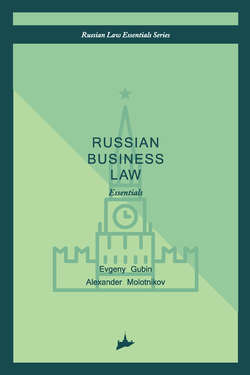Читать книгу Russian business law: the essentials - - Страница 32
Evgeny Arkhipov[24]
Chapter 2 – Business Association Forms
3. General Provisions on Legal Entities
3.11. Managing Bodies; Responsibility of Authorized Officers; Branches and Representations
Оглавление3.11.1. Managing Bodies of the Legal Entity
Legal entities of various organizational-legal forms have various managing bodies. As a rule, among the managing bodies of a legal entity, the following are included:
i) the highest collegial body (in corporate organizations, this is the general meeting of participants),
ii) the sole executive body,
iii) the executive board,
iv) a revision commission.
The instructions for the obligatory formation of bodies are contained not only in federal laws dedicated to separate organizational-legal forms, but also in laws regulating different types of activities. Thus, Article 26 of the Federal Law on Education stipulates that the educational organization, regardless of its organizational-legal form, must form a collegial management body, which is a general meeting of the employees of the organization.
The corporation’s charter may stipulate that the powers of the sole executive body are given to several persons. Additionally, it is possible to create several sole executive bodies that act independently from each other in a corporation. These rules have been introduced in the CC of the RF recently, therefore the practical application of these rules is still in development.
The natural person (general director, president, chairman), individual entrepreneur (managing director), and legal entity (management company) can act as the sole executive body of the corporation.
3.11.2. Responsibilities of the Person Authorized to Act on Behalf of a Legal Entity; Responsibilities of the Members of the Executive Board of the Legal Entity; and Persons Determining the Actions of the Legal Entity (so-called "removal of a corporate veil")
A person who is granted with the right to act on behalf of a legal entity, as per a legal act or a constituent document, bears liability for losses caused to this legal entity by his/her fault. Conditions of the responsibility of the named person are dishonesty or unreasonableness of its actions. In similar cases, responsibility is also incurred by members of executive board who voted for the decisions of the legal entity which led to losses; or dishonestly evaded from participation in voting. Finally, persons, who have the opportunity to determine the actions of the organization, are liable for losses of the legal entity caused by their guilty actions (Article 53.1 of the CC of the RF).
3.11.3. Representations and Branches of the Legal Entity
Any legal entity has the right to have representations and/or branches. According to the CC of the RF, the representation is a separate division of the legal entity, and is located outside of its primary address. The representation can:
i) represent interests of the legal entity,
ii) exercise their protection.
The branch differs from representation by exercising any functions of the legal entity, including the functions of representation (Article 55 of the CC of the RF).
